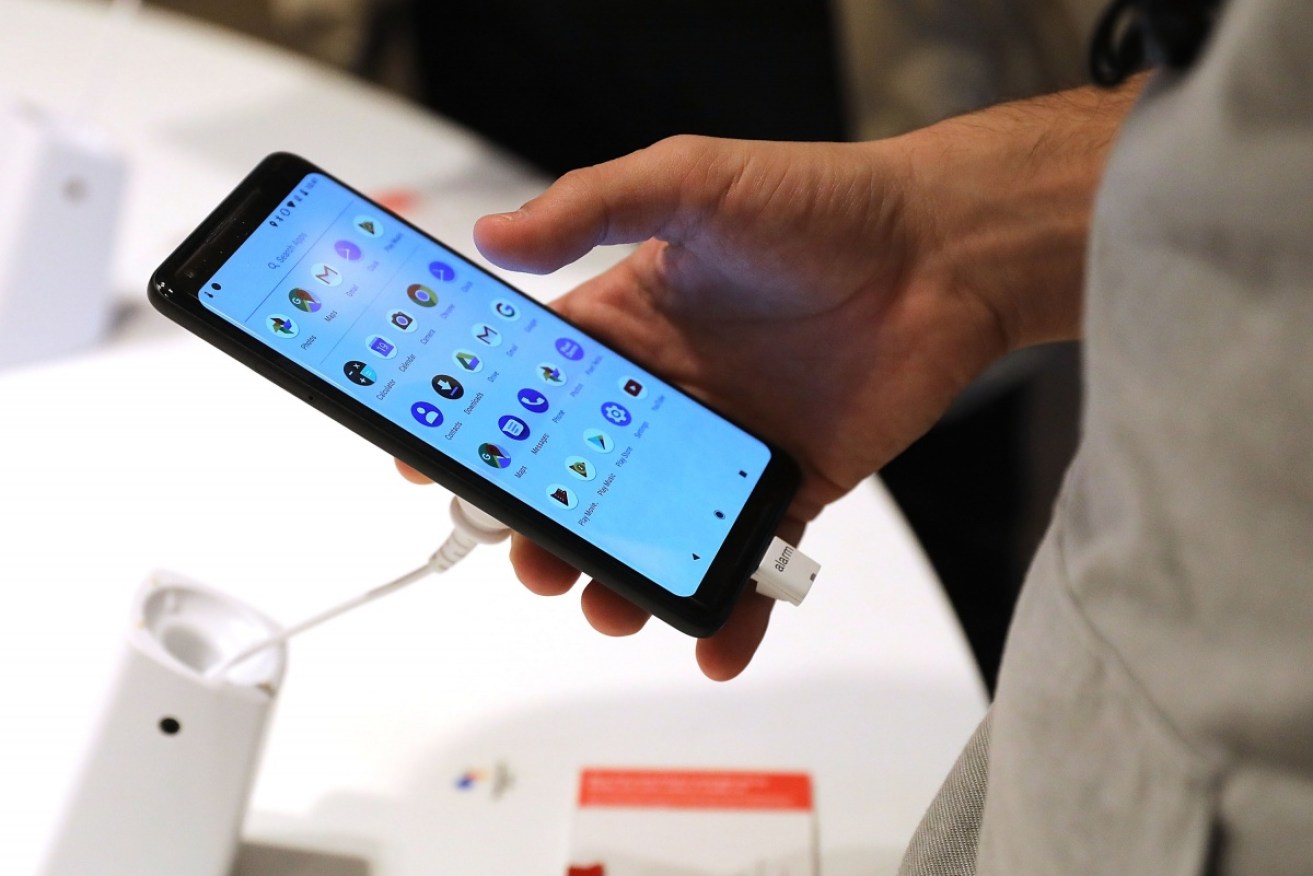Google’s new Pixel 2 smartphone: a powerful extravagance

The Pixel 2, the new flagship phone from Google. Photo: Getty
The last smartphone I reviewed was the original Apple iPhone, which ushered in the mobile revolution back in 2007.
At the time, I didn’t exactly give the device a rave review.
Two weeks after waiting in line for hours outside the San Francisco Apple Store and paying $US540 ($702) for the iPhone, I even returned it and got my money back.
It was obvious to me that the iPhone was a powerful thing and everyone – from Steve Jobs, Apple’s co-founder, right down to the people I passed on the street – kept telling me how great it was.
But it was also an extravagance. The iPhone wouldn’t really justify its $500-plus cost for another year.
Ten years on, I’m now reviewing the Pixel 2, the new flagship phone from Google.
And my take is pretty much the same: People who want the latest and greatest phones won’t be disappointed by the Pixel.
But for most of us, this device, with a starting price of $US649 ($844) is an extravagance.
Google has found tremendous success convincing the world that it should prefer smartphones that run Android, its mobile operating system, which dominates global market share over Apple.
But Google has had much less success designing and selling its own phones.
It is not for a lack of trying. Last autumn, the company’s campaign reached a new peak with the arrival of the original Pixel.
According to reviewers who were hipper, more experienced and less cynical than I, the Pixel was superior to the iPhone – a stance that amounts to sacrilege in certain circles.
In pitching the new Pixel, the company focused on services that lean on what is commonly called artificial intelligence. Photo: Google
Now comes the Pixel 2. After testing the gadget for nearly a week, I found I prefer it to the iPhone — though this is mostly because I have always carried Android phones.
Android is what I’m used to, and all my digital data is stored with Google, even though my daughters think I’m silly for not buying an iPhone.
Compared with other Android devices, the Pixel 2 XL, the model I tested, and the larger of the two versions of the device, was also a big improvement.
I liked that the Pixel 2 XL’s fingerprint reader, which instantly unlocks the phone, sat on the back of the device, not far from where my finger typically sits.
I liked that the phone arrived with only a small number of essential apps, rather than the sea of flotsam that typically ships with Samsung phones.
And I liked that, as my 13-year-old Snapchat-astic daughter said, “the camera is definitely better.”
The Pixel also charged quickly; a few minutes plugged into the wall gets you hours of battery life. Google said the device is water-resistant. And the screen, 6.2 inches (15.75 centimetres) along the diagonal, was enormous — though not so huge that I couldn’t comfortably hold the phone in one hand.
It was nice that, for those rare occasions when I watched extended YouTube videos, the image stretched to the edge of the phone.
Yet is any of this all that different from other top-of-the-line phones? Not really. And Google knows this. Even the steep $US849 ($1104) pricing for the Pixel 2 XL was in line with rivals.
In pitching the new Pixel, the company focused on the Google Assistant — Android’s answer to Siri — and other services that lean on what is commonly called artificial intelligence.
This included Google Lens, a service that instantly identifies landmarks, books, movies and other stuff you capture in photos, as well as a service that, in similar fashion, automatically identifies songs playing on a nearby radio or television.
These were certainly the most impressive parts of the new phone.
And they showed how recent advances in machine learning are producing consumer devices, cars and robots that can read, analyse and respond to their environment in ways that were not possible just a few years ago.
Drawing on work by DeepMind, an A.I. lab in Britain that Google acquired in 2014, for instance, the Google Assistant now speaks with a voice that’s closer to your own.
That sums up all these services. Many are technically impressive, and some are useful. But they took the Pixel only so far past the status quo.
The Google Assistant was the most adept of all the digital assistants, easily beating Siri and Amazon’s Alexa. My younger daughter loved it. (At one point, she said it was more fun than me.)
But like those other assistants, it could not deal with more than just a handful of simple tasks, typically delivering web pages or preset answers in response to questions.
In most cases, it can recognise what you say. But it cannot necessarily understand what you say and respond in a completely satisfying way. That is still to come.
Still, after a few days, I was rather attached to the Pixel 2 XL.
Even so, I plan to keep the $US849 for now. The smaller version of the new Pixel goes for $US649, and I might go for that, when I finally need a new phone.
– The New York Times








